Tennessee Field Diamonds
5
A treasure 485 million years in the
making.
|
Crystals near Walland
(Locality 4)
Contorted and sheared Sevier Shale.
|
The crystals found in deformed Sevier
Shale at Walland are an exception to the more general
presence of bipyramidal crystals in that formation. They
are found in a road exposure just below the Great Smoky
Fault. These crystals are small, but some are very
unusual.
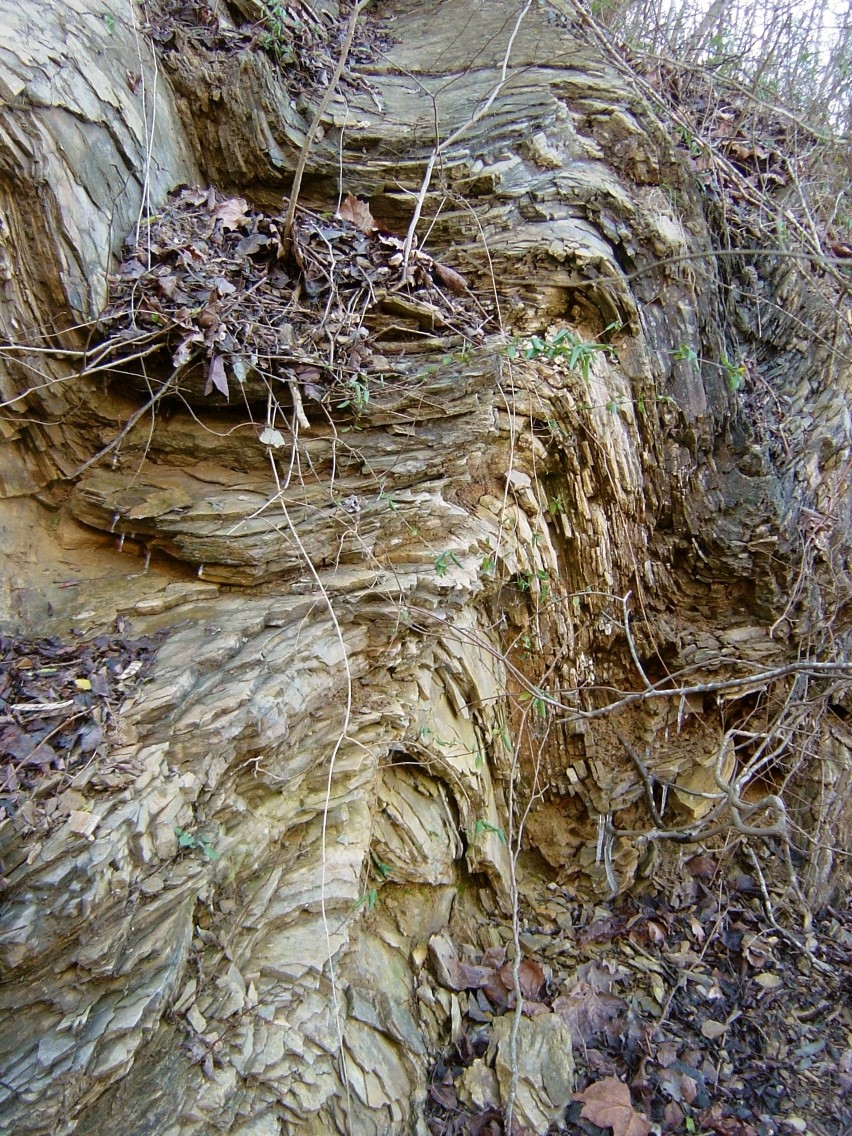
Folds in bedded shale and siltstone. This locality is
often visited by geology students for its good examples
of folding.
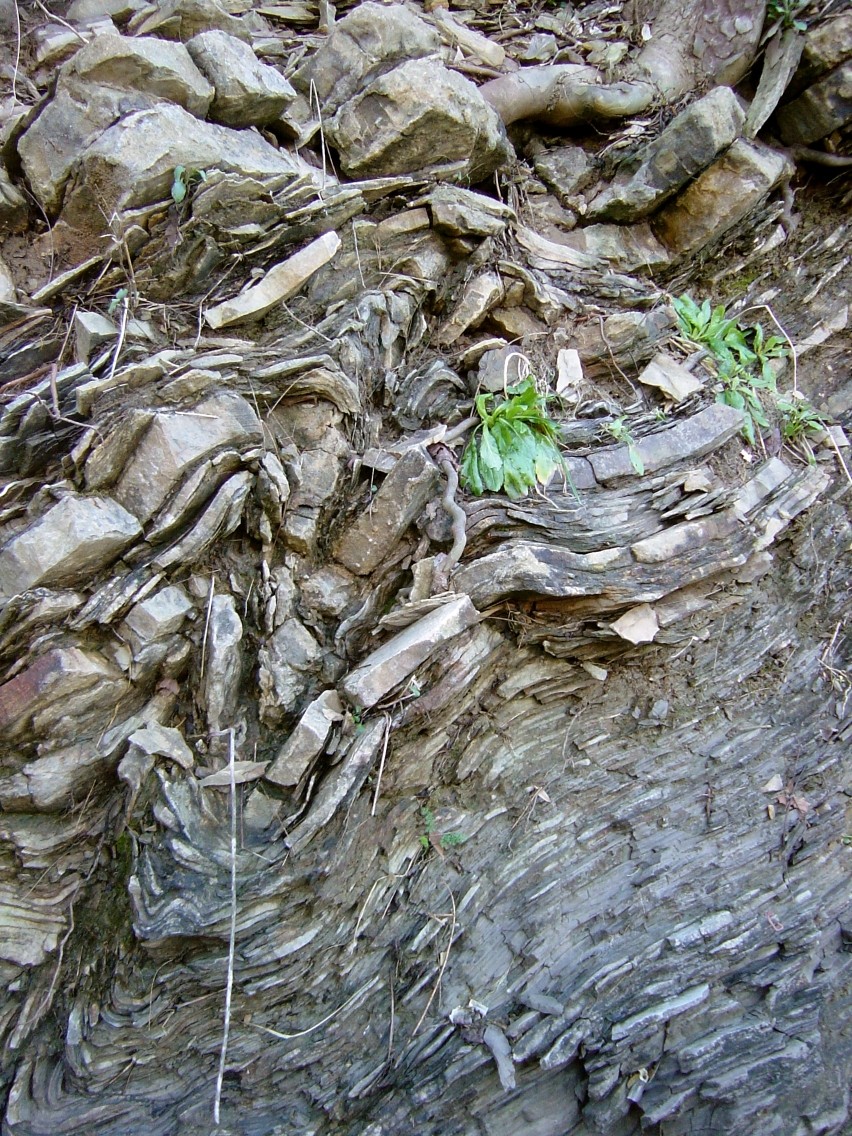
Deformed rock contains vugs with crystals in extension
cracks.
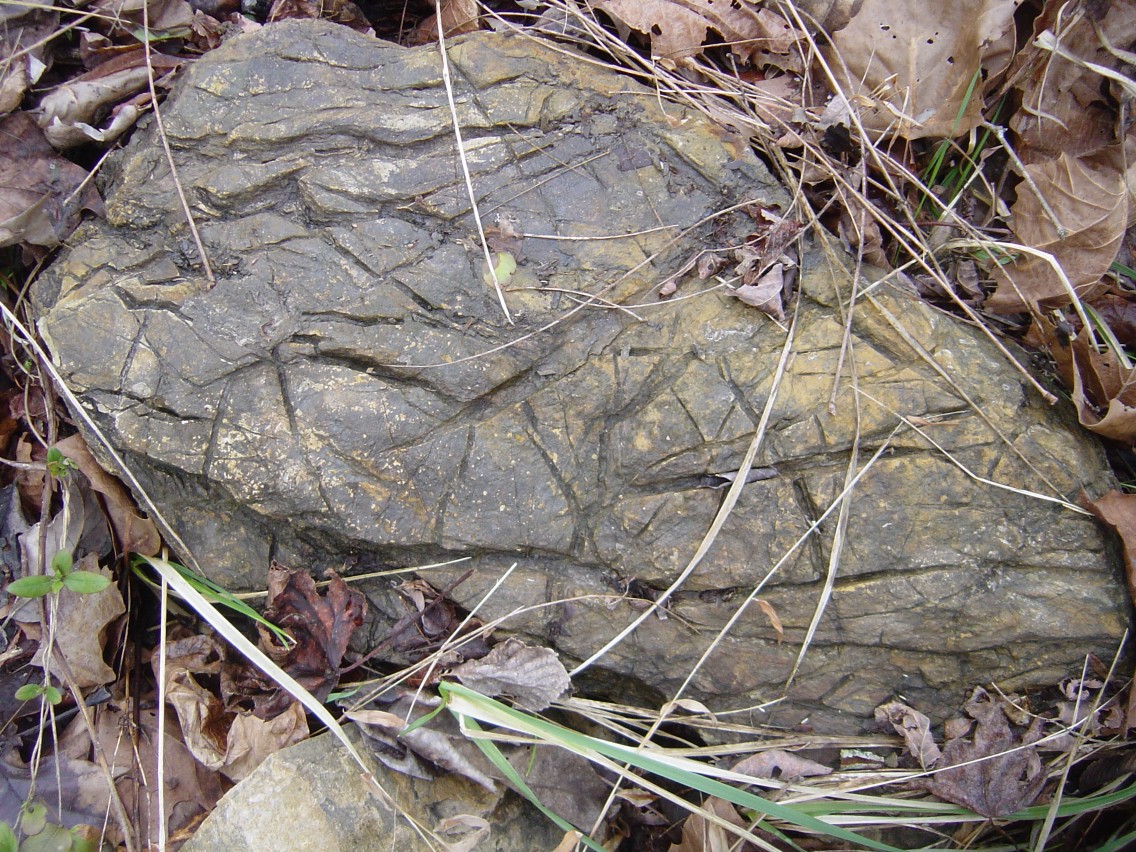
Extension cracks result from a ductility contrast between
the more silty layers and the clay-rich layers. One
might use the analogy of thin layers of peanut butter
cookie separated by layers of peanut butter.
If you sit on it, the peanut butter may be forced into
the cracks formed as the more brittle cookie cracks and
the entire mass spreads out.
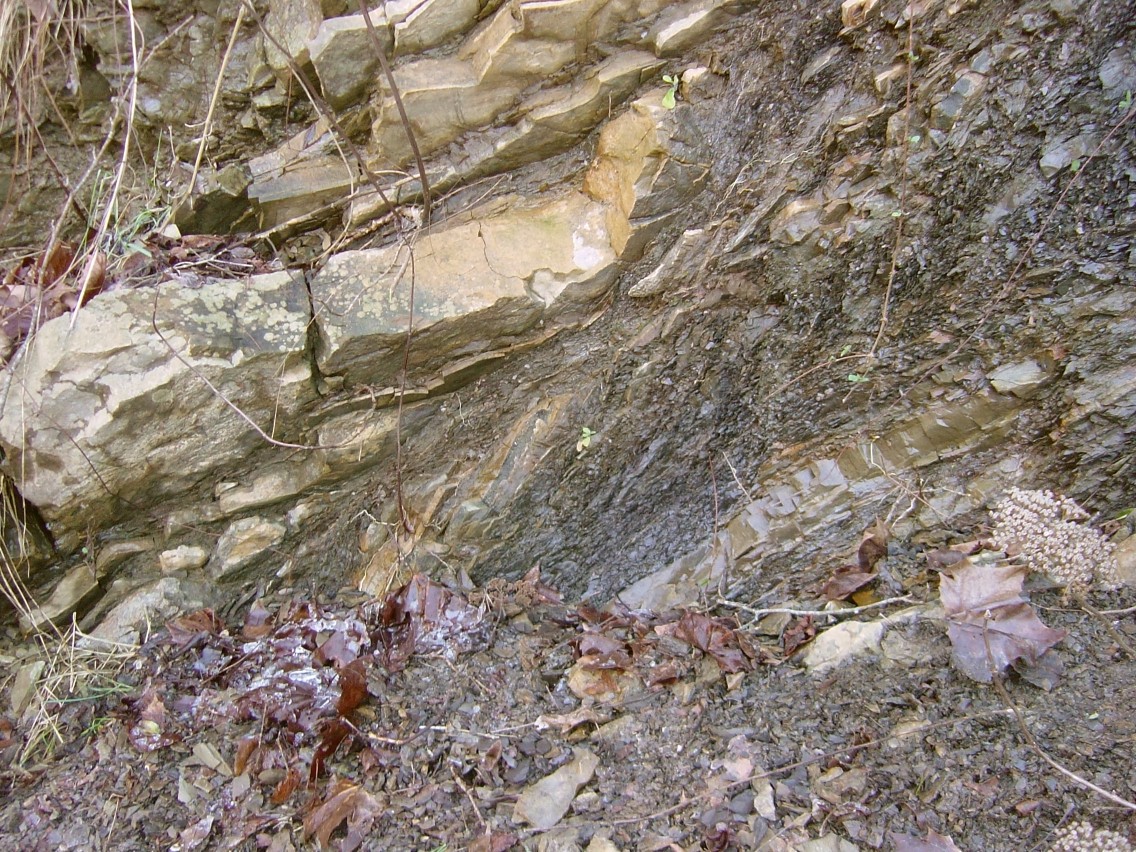
Siltstone and deformed beds of shale.

Another view.
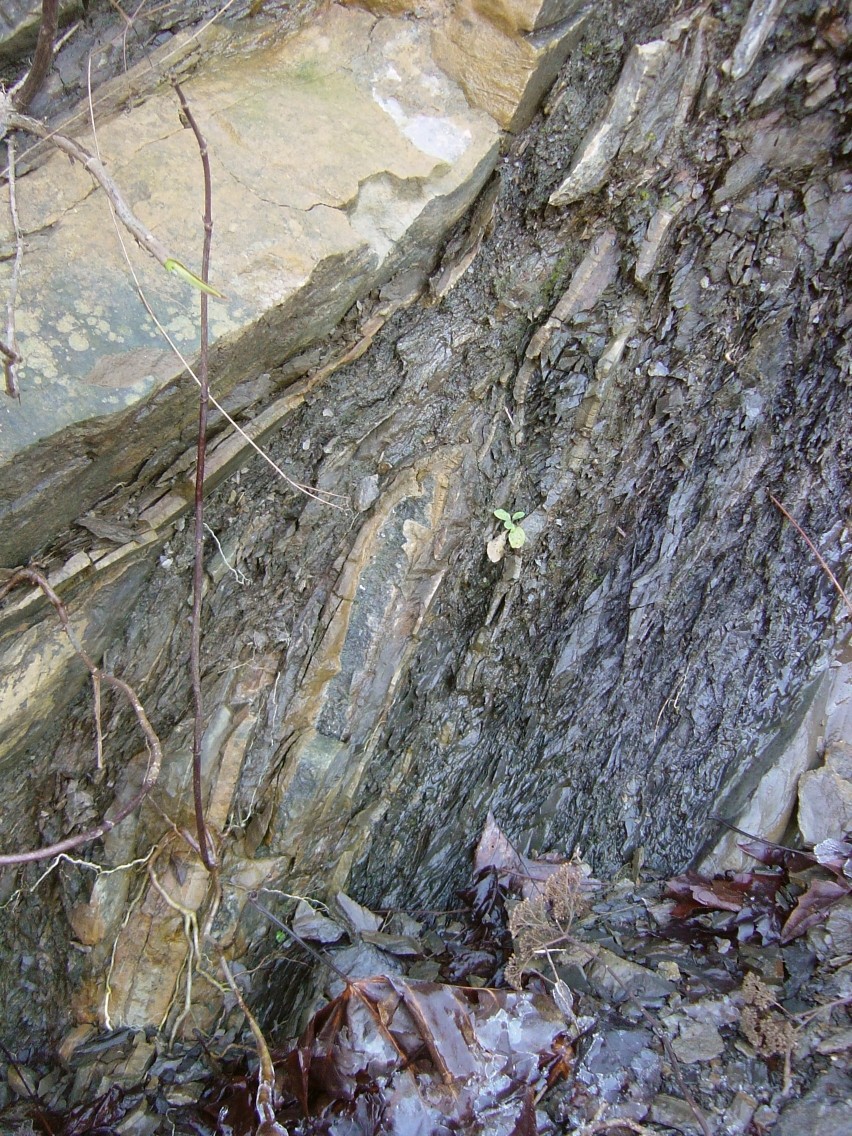
Closer view of the sheared shale. The elongated
gray surface to left of center is a calcite-lined
extension crack surface with several small quartz
crystals.
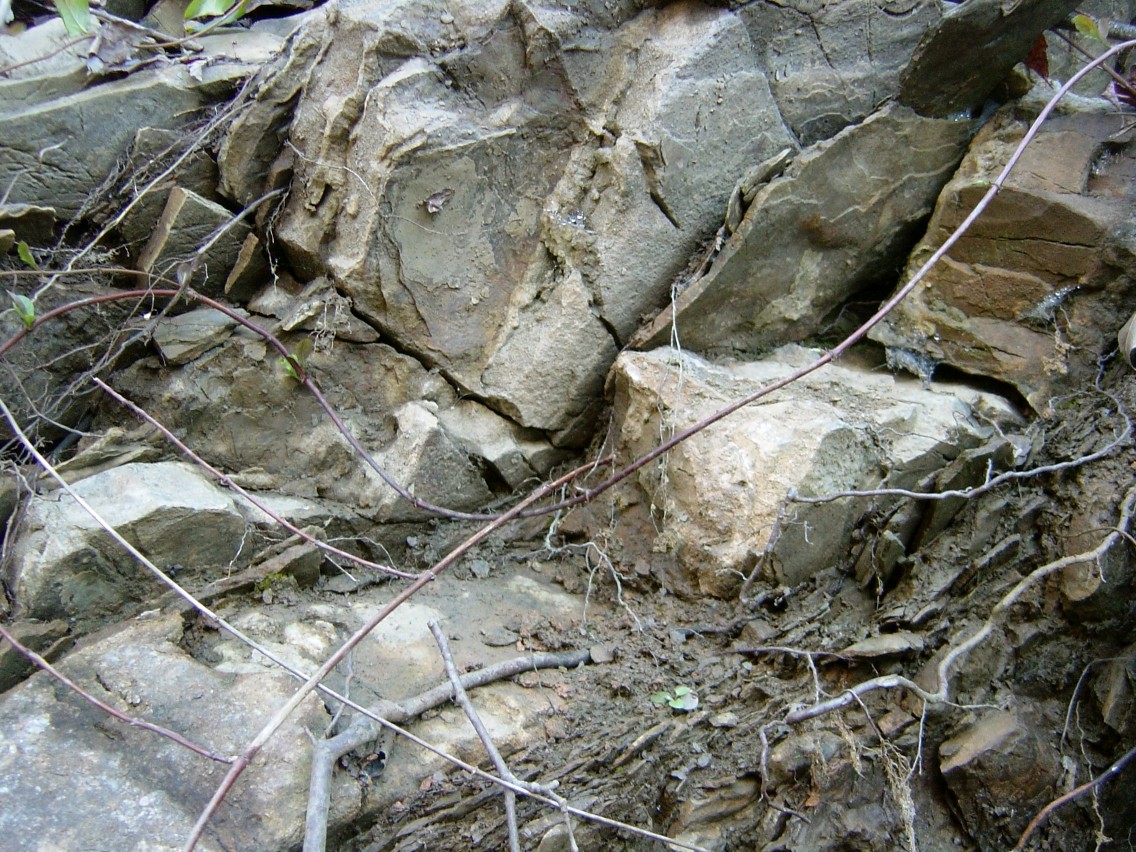
The crack surfaces in this photograph are somewhat dirty,
but calcite-lined and crystal bearing.
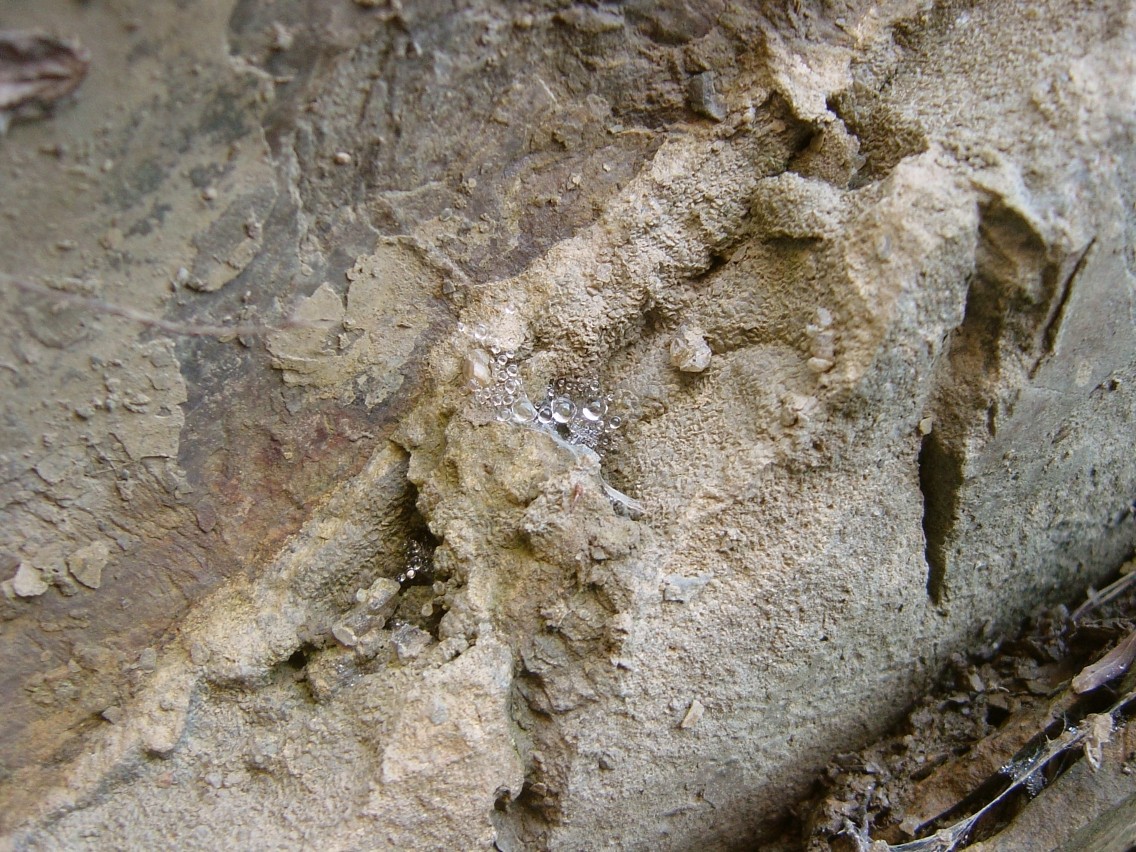
Close-up showing calcite-lined extension cracks with
quartz crystals. The objects in the very center are
dew drops trapped in a spider web however. The next
photograph looks down into the small crack to the upper
right.
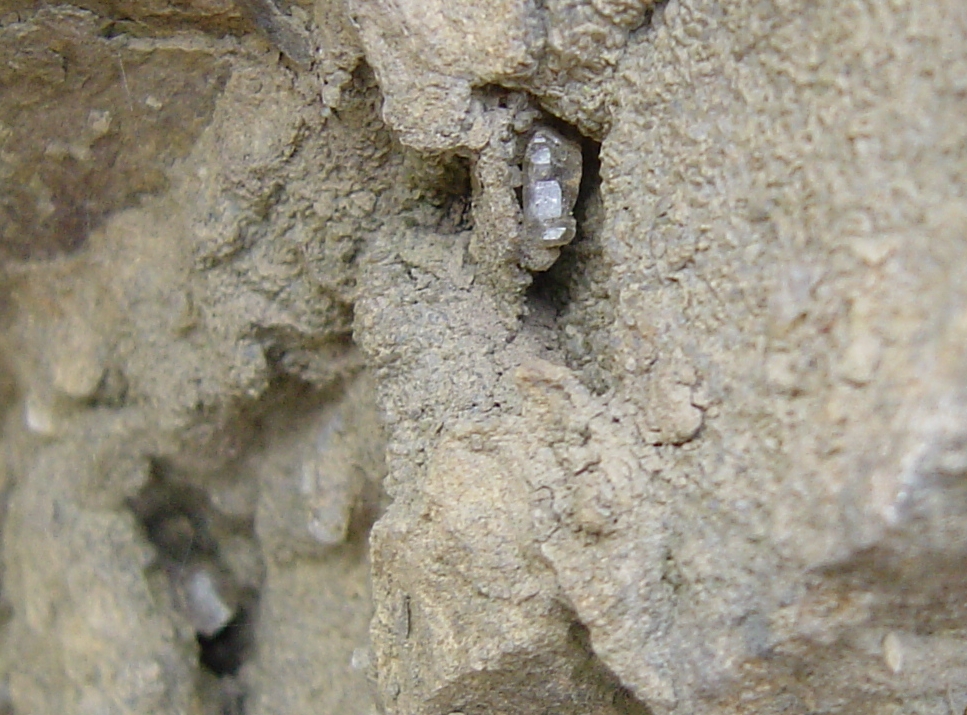
Deformed layers with crystals growing in extension
cracks.

Each of the shiny objects in this extension crack is a
quartz crystal.
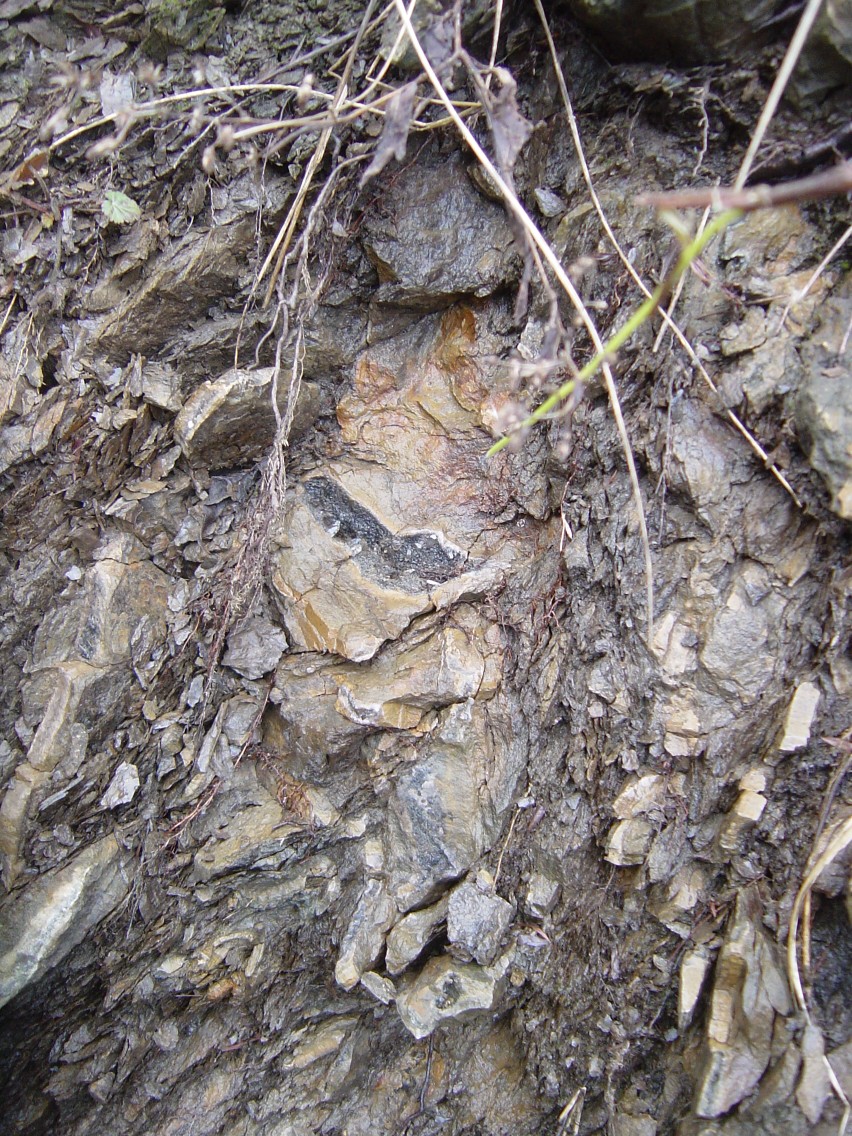
Vug in extension crack.
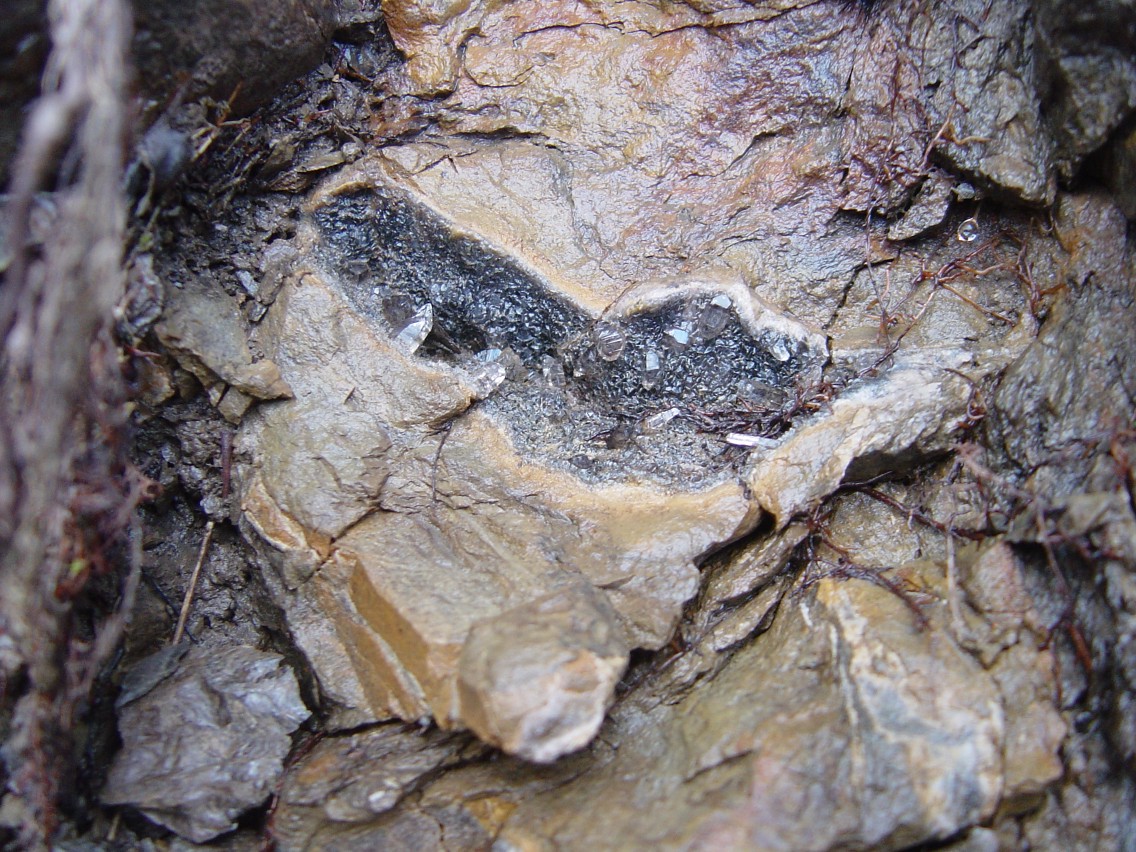
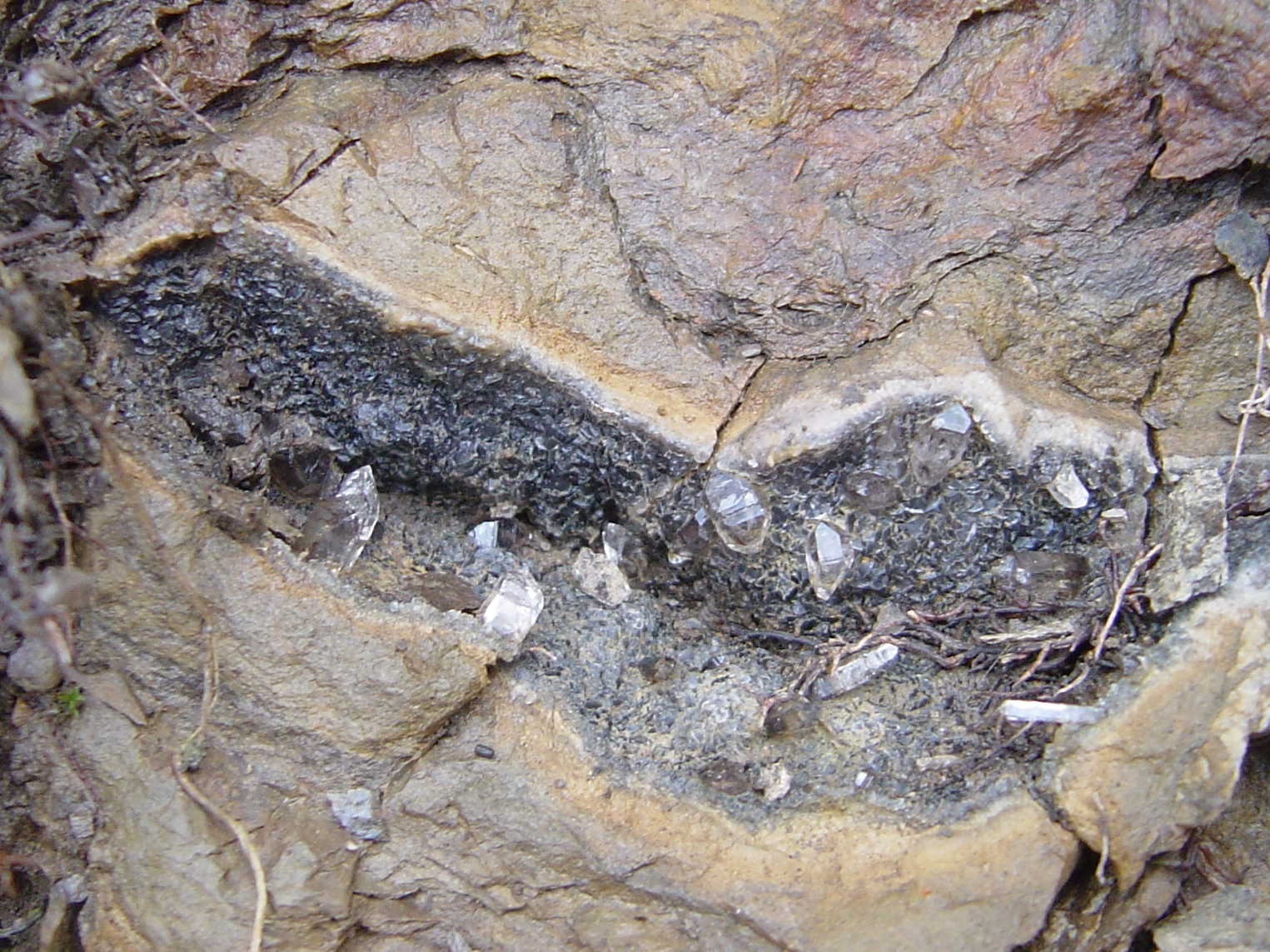
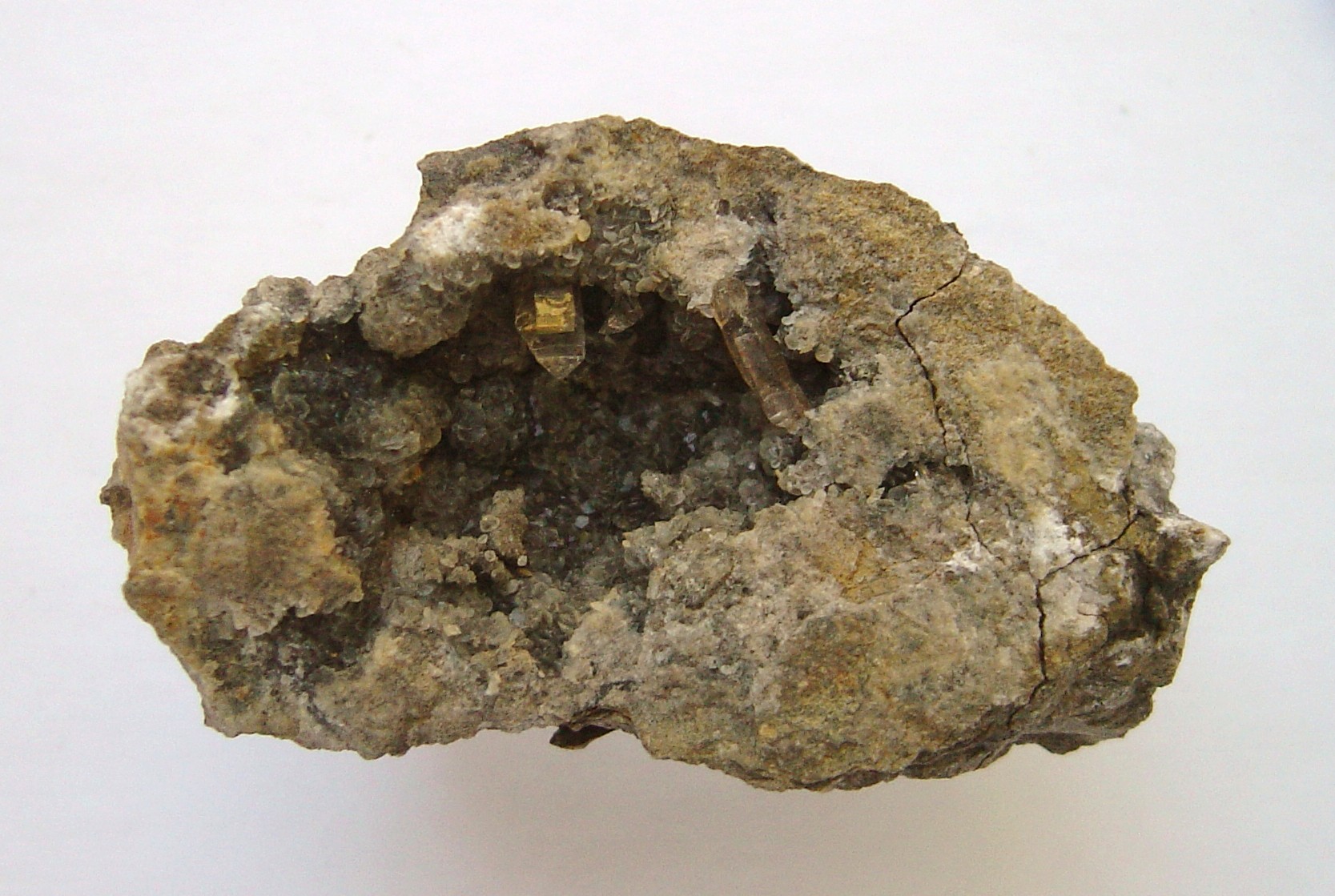
Quartz crystals in vug, small specimen.
Microphotographs
Close examination
reveals inclusions and other features
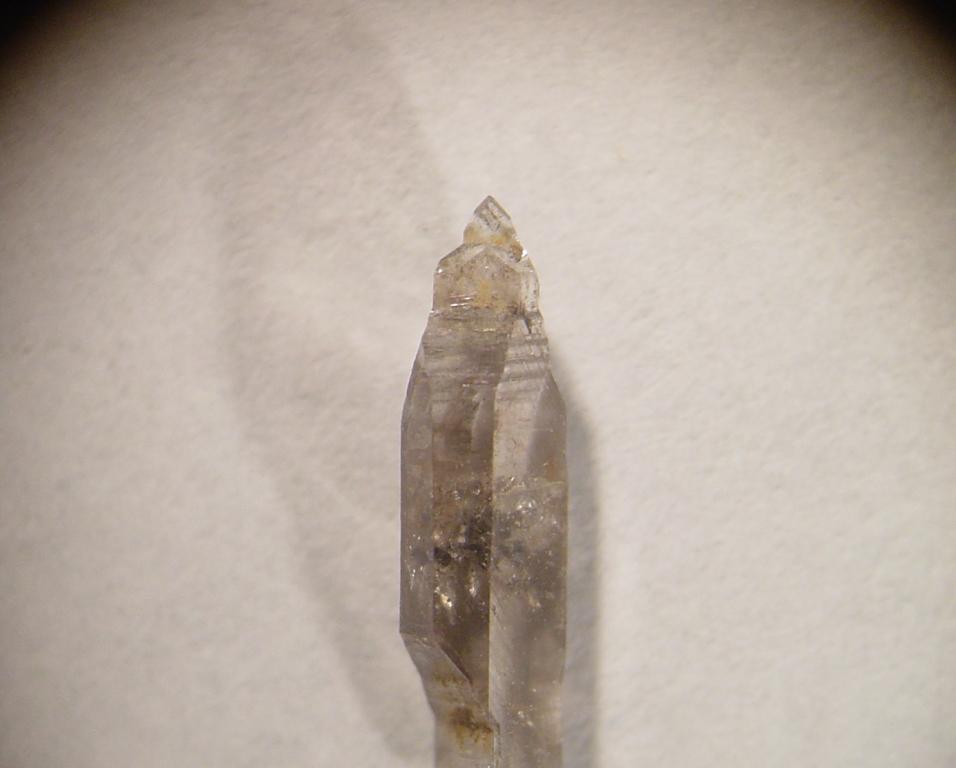
“Skyscraper” tapered form, reminding one of the
Tessin habit.
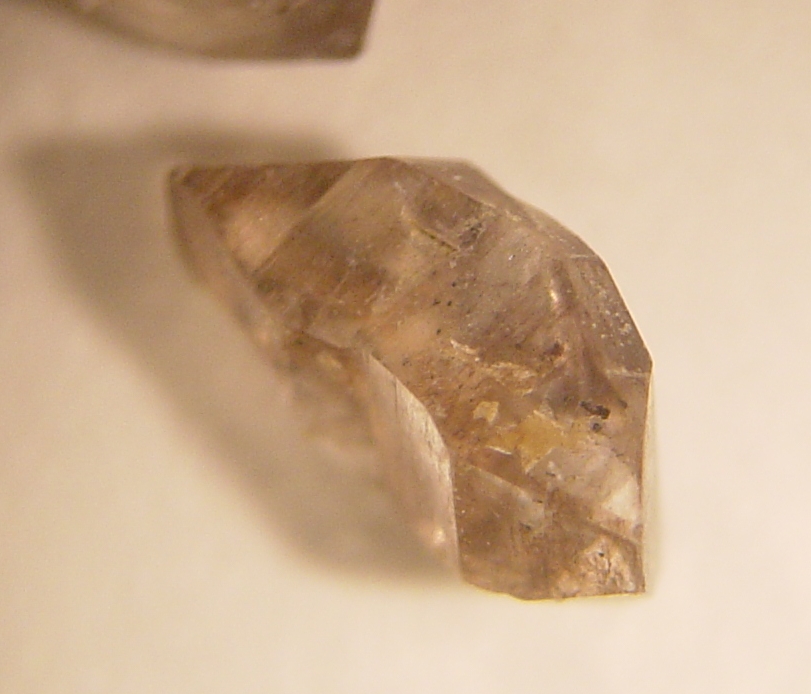
Yellow material in inclusion is probably a petroleum or
derivative.
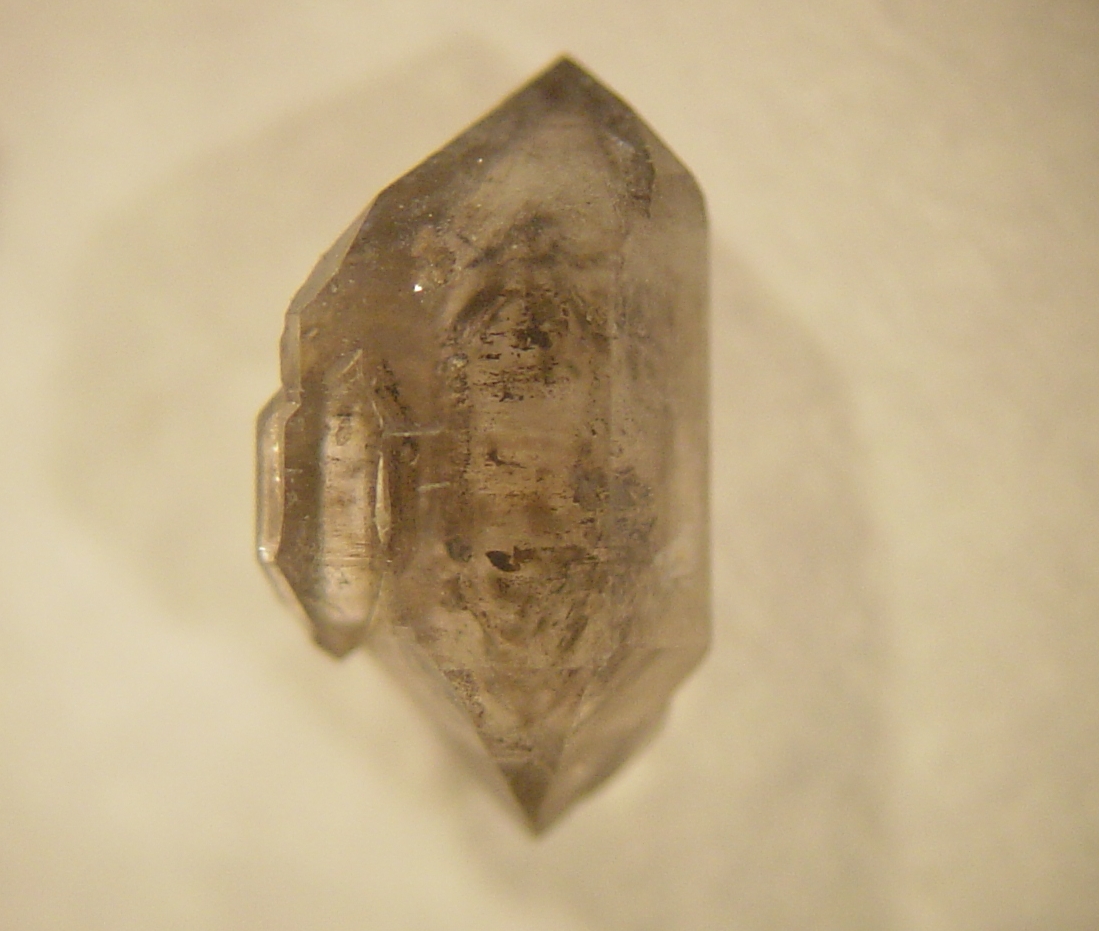
Phantoms defined by the dark inclusions suggest they were
separate crystals when smaller, and not
in contact at that time. So how is it they are they
parallel?
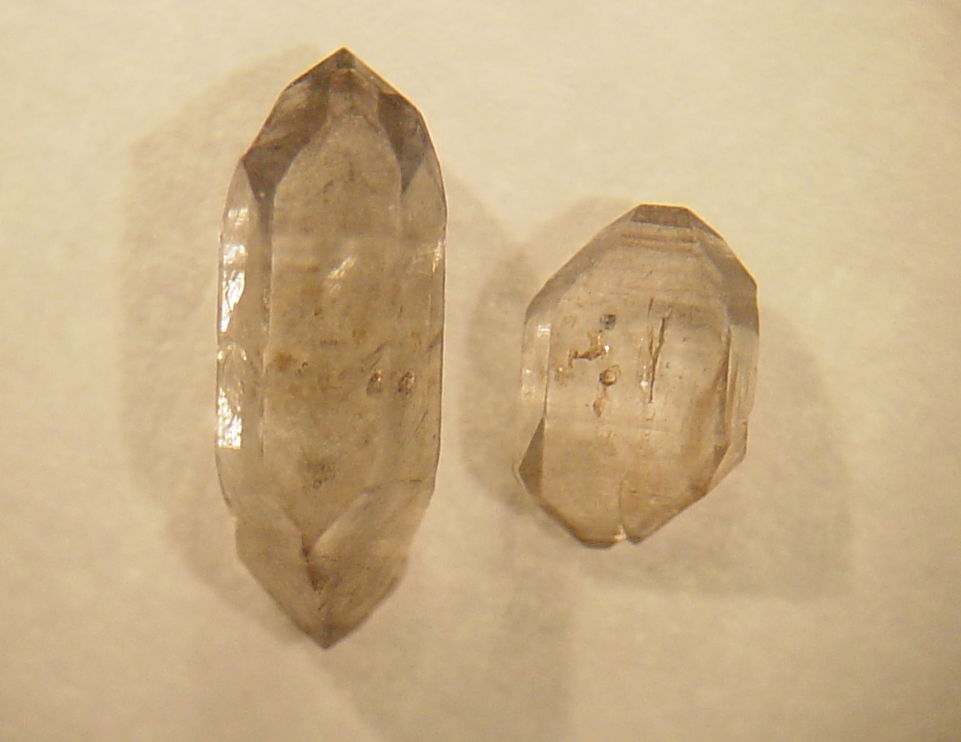
Inclusion bubbles. See below.
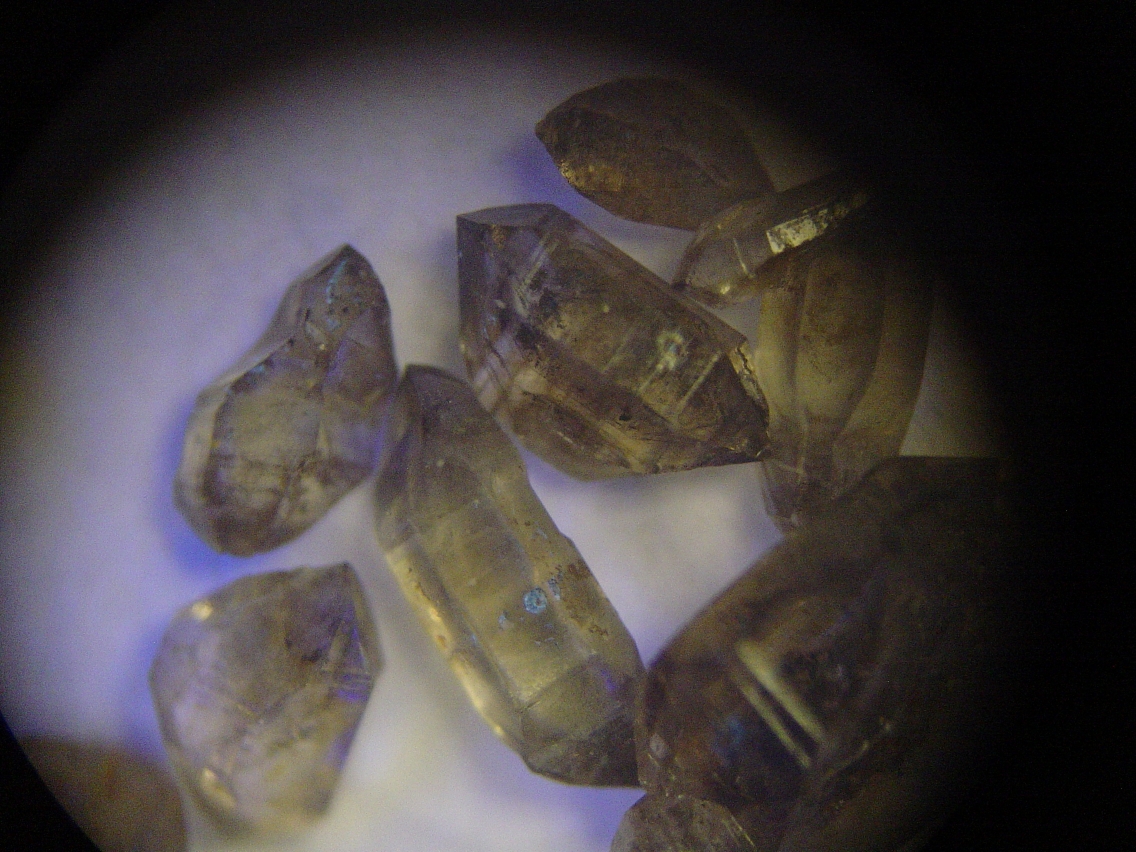
Another view with ultraviolet illumination. Blue
fluorescence indicates petroleum.
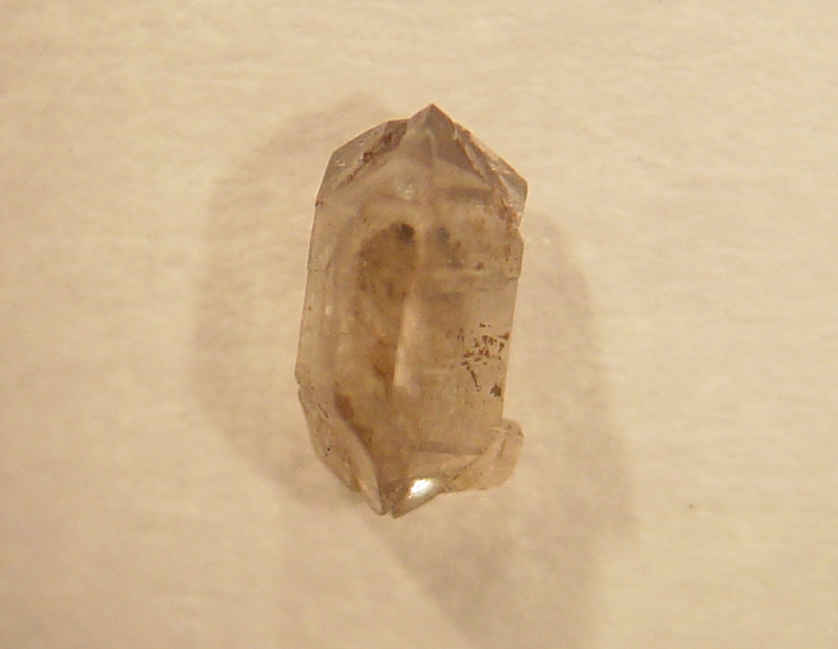
Unique terminations occur on some crystals from this
locality. This crystal shows how they developed as
late stage overgrowths.
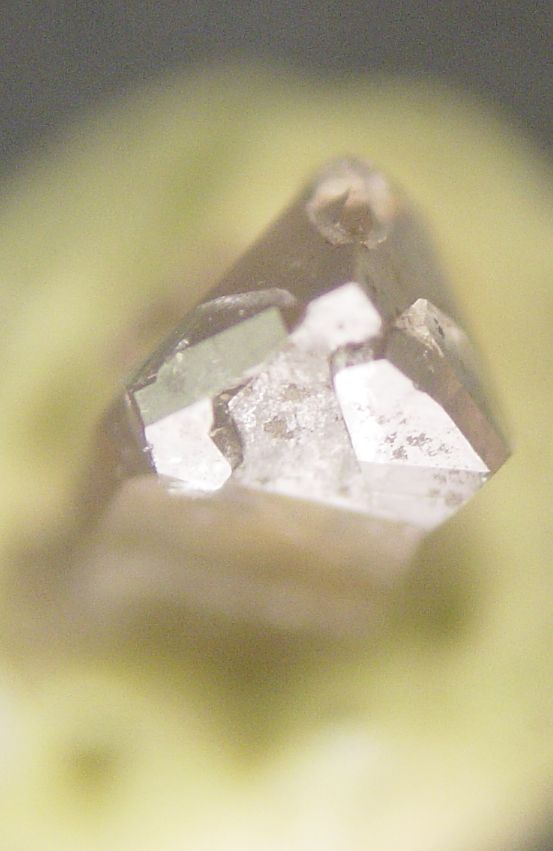 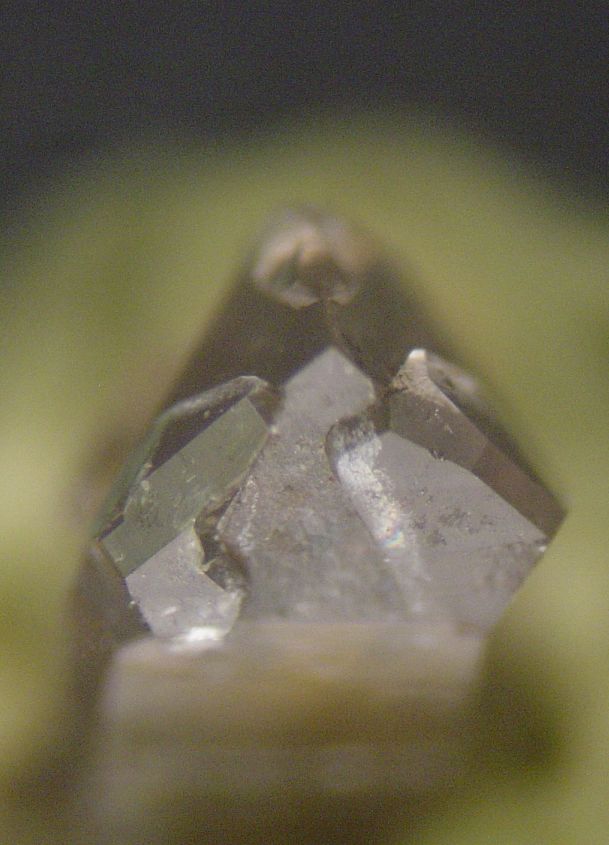
Detail looking down at the termination. These are
the ‘pi and ‘omega faces, obtuse rhombohedral
terminations generally rare in quartz.
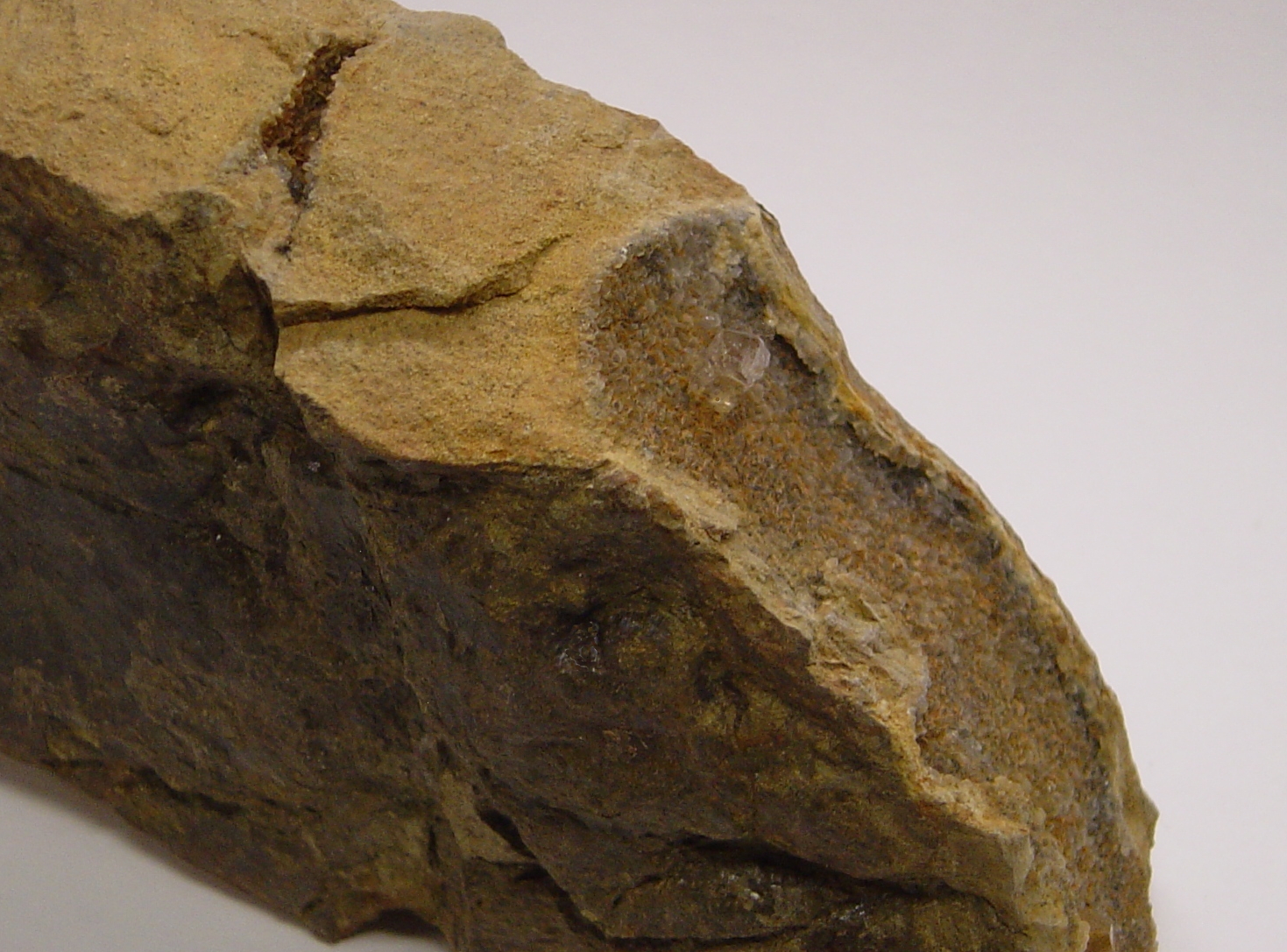
Specimen with unusual faces growing from extension crack
surface. This specimen has a well-developed obtuse
rhombohedral termination.
 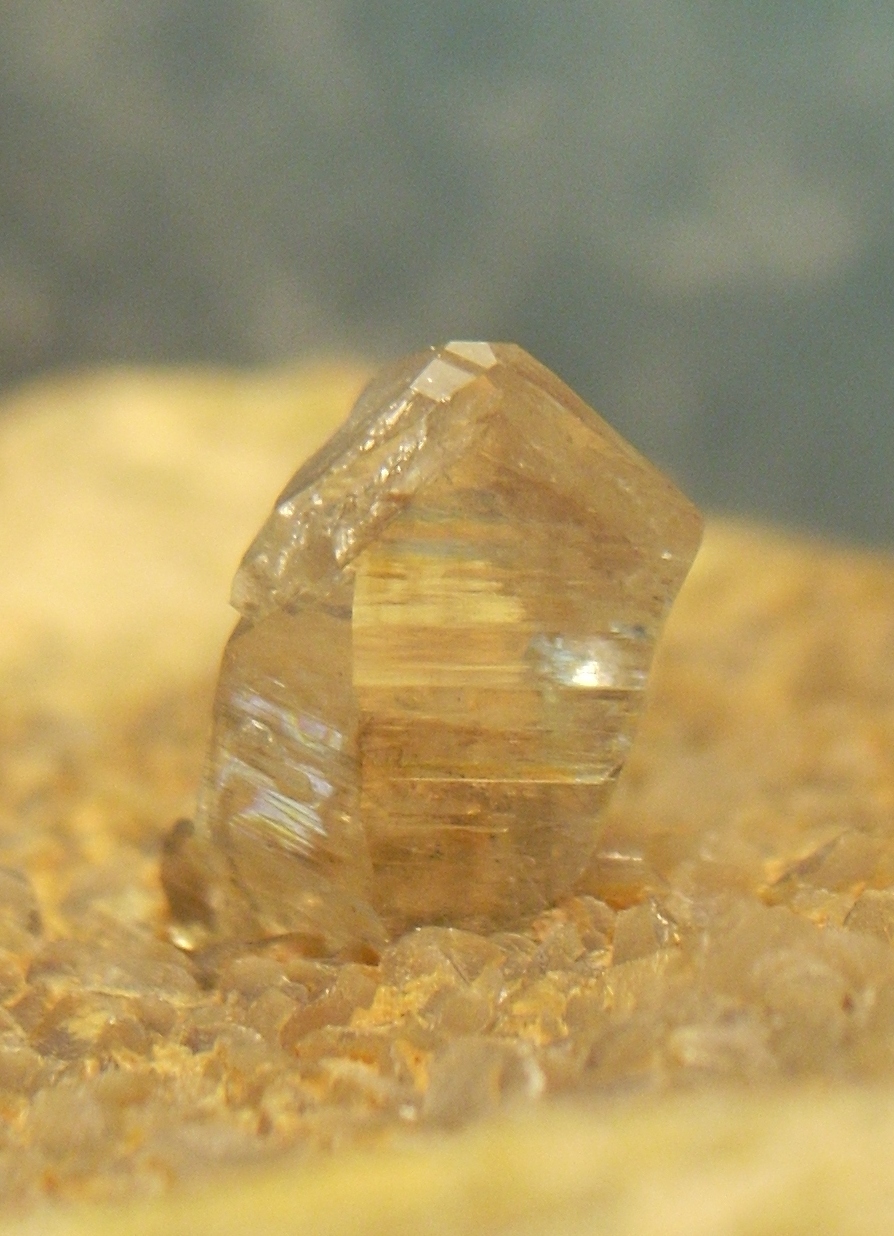
Details of above crystal with ‘ pi and ‘ omega
termination faces.


Water / petroleum / vapor three-phase inclusion in
visible and UV light.

Vapor-rich, with petroleum in the corners.

Wax-paraffin rich, with some black bitumen.

Just extremely spacey - what can you say?
What if anything can we say about these crystals?
First, it seems that the ones in the Knox Group
formations show greater variety. There’s
always both elongate prismatic crystals and
bipyramidal crystals, and everything in
between. Transitional forms or
“scepters”, with clear bipyramidal quartz
growing over milky fractured prismatic quartz are
common. With the one exception, the occurrence
near the Great Smoky Fault at Walland, no Sevier
Shale crystals are strongly prismatic, and none show
scepter overgrowth formation. In the next
section we will see if any conclusions can be drawn.
We will also go far afield in an attempt to place
"Herkimer" type doubly terminated crystals
into the enormous variety of quartz morphology seen
in nature.
Index
|





























